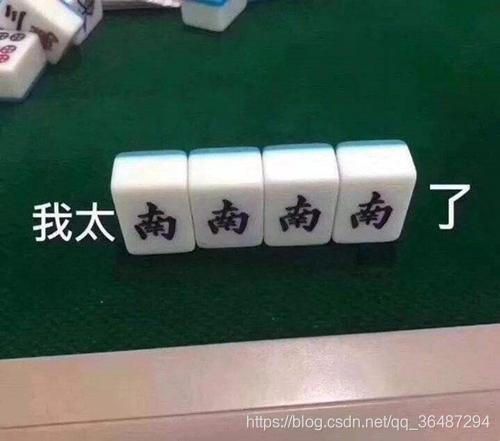vue,angular,微信小程序的一些不同(持续更新)
最近在学uni-app,发现和vue,微信小程序语法差不多,但公司技术栈是angular,已经接近一年没使用vue和微信小程序了,所以在这里小小总结下(基于自己),勿喷。
啊啊啊啊,最近这几个有点搞昏了,如有错误请指出,谢谢。
一、数据绑定
- vue
html部分
<span>{{authorName}}</span>
<img :src="imgSrc">
注: 这里遇到个问题 当我 写成 imgSrc: ‘./assets/logo.png’ 时图片加载失败
此时将代码改成 imgSrc: require(’./assets/logo.png’)即可
js部分
export default {
data(){
return {
authorName: 'ycy',
imgSrc: require('./assets/logo.png')
}
}
}
// 修改的话
this.authorName = 'ycy2';
- angular
html部分
<span>{{authorName}}</span>
<img src={{imgSrc}}>
js部分
public authorName: string = 'ycy';
public imgSrc: string = './assets/logo.png';
// 修改的话
this.authorName = 'ycy2';
- 微信小程序
html部分
<text>{{authorName}}</text>
<image src="{{imgSrc}}"></image>
注:
微信小程序没有img标签,取而代之的是image
没span等标签,确认代之的是text等等
js部分
data: {
authorName: 'ycy',
imgSrc: './assets/logo.png'
}
// 修改的话
this.setData({authorName: 'ycy2'});
二、列表渲染
// 初始列表数据
list: [
{name: 'zhangsan', sex: '男'},
{name: 'lisi', sex: '女'}
]
- vue
<div v-for="(item, index) in list">
{{index + 1}} 姓名: {{item.name}} 性别: {{item.sex}}
</div>
- angular
<div *ngFor="let item of list; index as i">
{{i + 1}} 姓名: {{item.name}} 性别: {{item.sex}}
</div>
- 微信小程序
<view wx:for="{{list}}" wx:for-item="item" wx:for-index="index">
{{index + 1}} 姓名: {{item.name}} 性别: {{item.sex}}
</view>
三、条件渲染
注: 下面代码isShow默认为true
- vue
<div v-if="totalNumber === 1">1</div>
<div v-else-if="totalNumber === 2">2</div>
<div v-else>其他</div>
<div v-show="isShow">显示</div>
<div v-show="!isShow">隐藏</div>
- angular
<ng-container *ngIf="totalNumber === 1; else elseTemplate">
1
</ng-container>
<ng-template #elseTemplate>
<ng-container *ngIf="totalNumber === 2; else elseTemplate2">
2
</ng-container>
<ng-template #elseTemplate2>
其他
</ng-template>
</ng-template>
<div [hidden]="!isShow">显示</div>
<div [hidden]="isShow">隐藏</div>
- 微信小程序
<view wx:if="totalNumber === 1">1</view>
<view wx:elif="totalNumber === 2">2</view>
<view wx:else>其他</view>
<view hidden="{{!isShow}}">显示</view>
<view hidden="{{isShow}}">隐藏</view>
四、事件处理
- vue
<button v-on:click="tapFuc('click')">点击事件</button>
methods: {
tapFuc: function(param) {
console.log(param);
}
},
- anuglar
<button (click)="tapFuc('click')"></button>
public tapFuc(param): void {
console.log(param);
}
- 微信小程序
<button bindtap="tapFuc" data-par="click">点击事件</button>
tapFuc: function(e) {
console.log(e);
console.log(e.target.dataset.par);
}
// e显示如下
{
"type":"tap",
"timeStamp":895,
"target": {
"id": "tapTest",
"dataset": {
"par":"click"
}
},
"currentTarget": {
"id": "tapTest",
"dataset": {
"hi":"WeChat"
}
},
"detail": {
"x":53,
"y":14
},
"touches":[{
"identifier":0,
"pageX":53,
"pageY":14,
"clientX":53,
"clientY":14
}],
"changedTouches":[{
"identifier":0,
"pageX":53,
"pageY":14,
"clientX":53,
"clientY":14
}]
}
五、父子组件通信
- vue
- 父组件
<template>
<div>
<HelloWorld msg="Welcome to Your Vue.js App" @sendToFather="getFromChild"/></HelloWorld>
</div>
</template>
// 父组件要注册子组件
import HelloWorld from './components/HelloWorld.vue'
components: {
HelloWorld
},
methods: {
getFromChild(data) {
// 接收来自子组件的消息
console.log(data);
}
},
2.子组件
<button v-on:click="tapChildFuc()">子组件的点击事件</button>
export default {
// props用来接收父组件的值
props: {
msg: String
},
methods: {
tapChildFuc: function() {
// 给父组件发送消息
this.$emit('sendToFather', {name: 'aaa'});
}
}
}
- angular
注:
angular的公用组件要注册
我一般放在share.module下
import { TextAnalysisComponent } from './components/text-analysis/text-analysis.component';
const declarations = [
TextAnalysisComponent,
];
@NgModule({
imports: [...imports],
declarations: [...declarations, ...directives],
providers: [...providers],
exports: [
...declarations,
...imports,
...directives
],
})
父组件
// 在父组件最接近的module里要引用
import { ShareModule } from '../../../../shared/shared.module';
const imports = [
CommonModule,
FormsModule,
RouterModule.forChild(routes),
NgZorroAntdModule,
ShareModule,
];
@NgModule({
imports: [ ...imports ],
declarations: [ ...declarations],
providers: [ ...providers ],
})
// 下面是父组件的代码
<dgp-text-analysis
[msg]="'Welcome to Your Angualr App'" (sendToFather)="getFromChild($event)">
</dgp-text-analysis>
public getFromChild(data: any): void {
console.log(data);
}
子组件
<button v-on:click="tapChildFuc()">子组件的点击事件</button>
@Input() public msg: string; //这里接收来自父组件传过来的值
@Output() public sendToFather: EventEmitter<any> = new EventEmitter<any>();
public tapChildFuc(): void {
//向父组件发送消息
this.sendToFather.emit({name: 'aaa'});
}
- 微信小程序
父组件
// 2.父组件的json中使用usingComponents引入
{
"usingComponents": {
"helloWorld": "../../components/indexList/indexList"
}
}
// html
<helloWorld msg="Welcome to wx"></helloWorld>
子组件
// 1.在子组件的json中的component修改为true
{
"component": true
}
<button bindtap="tapChildFuc" bind:sendToFather="getFromChild">子组件的点击事件</button>
methods: {
getFromChild(e) {
// 接收来自子组件的消息
console.log(e.detail)
}
}
// js文件中使用properties接收父组件传过来的信息
properties: {
msg: {
type: String,
value: ''
}
},
methods: {
tapChildFuc() {
// 向父组件发送消息
this.triggerEvent('sendToFather', { name: 'aaa' }) //sendToFather自定义名称事件,父组件中使用
}
}
这样一比较,感觉angular最烦了,尴尬
六、兄弟间通信
- vue
1、创建个事件车bus.js,代码如下
import Vue from 'vue'
export default new Vue;
2、在两个兄弟组件中引用
import bus from '../assets/js/bus.js'
兄贵1
<template>
<div class="">
我是兄贵1 <button type="default" @click="giveMsgToBrother">点击我给兄贵2传值</button>
</div>
</template>
<script>
import bus from '../assets/js/bus.js'
export default {
name: 'test1',
data() {
return {
}
},
methods: {
giveMsgToBrother() {
console.log('给兄贵2传值');
bus.$emit('msg', 10);
}
}
}
</script>
兄贵2
<template>
<div>
我是兄贵2,后面时兄贵1给我的小宝贝{{money}}
</div>
</template>
<script>
import bus from '../assets/js/bus.js'
export default {
name: 'test2',
created() {
this.getMsg();
},
data() {
return {
money: 0
}
},
methods: {
getMsg() {
bus.$on('msg', (money) => {
this.money = money;
})
}
}
}
</script>
- angular
1、建立一个通用service
import { Injectable } from '@angular/core';
import { BehaviorSubject } from 'rxjs';
@Injectable({
providedIn: 'root'
})
export class BusService {
public message$= new BehaviorSubject<any>('');
constructor() { }
changeMsg(message: any): void {
this.message$.next(message);
}
}
2、兄贵1(发送事件)
constructor(private _busService: BusService) { }
public giveMsgToBrother(): void {
this._busService.changeMsg(10);
}
3、兄贵2(接收事件)
constructor(private _busService: BusService) { }
ngOnInit() {
this._busService.message$
.subscribe((money) => {
this.money = money;
});
}
- 微信小程序
小程序好像没有类似功能
实现方法两个子组件通过父亲进行中转传值
比如 test1 --> father -->test2 如果有什么其他方法可以推荐下
七、接口调用
先提供get请求,后面提供post请求,看看能不能加上proxy代理
- vue
// 本来这边想写proxy代理的
// 1. 安装axios
npm i axios
// 2. 在main.js下加入下面两行代码
import axios from 'axios'
Vue.prototype.$axios = axios
// 3.使用
const url = 'https://unidemo.dcloud.net.cn/api/news';
this.$axios.get(url)
.then((res) => {
console.log(res);
})
- angular
import { HttpClient } from '@angular/common/http';
import { Observable } from 'rxjs';
constructor(private _http: HttpClient) { }
const url = 'https://unidemo.dcloud.net.cn/api/news';
this._http.get(url)
.subscribe((res) => {
console.log(res);
});
- 微信小程序
wx.request({
url: 'https://unidemo.dcloud.net.cn/api/news',
success(res) {
console.log(res.data);
}
})




